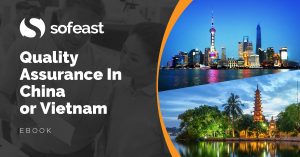 Over the past few days, I have been learning a lot about the ISO/TS 16949 standard. We are working on the development of adequate auditing services to clients in the automotive industry.
Over the past few days, I have been learning a lot about the ISO/TS 16949 standard. We are working on the development of adequate auditing services to clients in the automotive industry.
This “technical specification” (TS) goes much further than ISO 9001 and is closer to quality management best practices. So, can it be said to truly offer great improvements over ISO 9001? Let’s explore…
What is this TS about and where does it originate?
As mentioned in a previous article, a car maker (e.g. GM, VW…) can’t switch a supplier once a car model is in production. So they have to ensure they work with well-organized manufacturers. They have no second chance!
The TS is a set of minimum requirements for car component manufacturers. It was originally developed by “Big Three” in the US, and then European car brands joined this scheme. Even a few Chinese car brands recognize it and use it.
It has to be relevant and applicable to a very wide product range, from the textile or leather of the seats, to wood parts used in luxury cars, to lighting and electronic systems, to the rubber of tires, etc. So overall it is rather generic — but less so than ISO 9001, which also applies to service providers.
What elements from the TS are particularly interesting?
I noted a few requirements that are absent from ISO 9001 but that, I think, are interesting:
- The factory layout should be designed to make material flow easy. The premises must be in a state of order and cleanliness. There is a mention of the need to focus on lean manufacturing principles, and the term “continual improvement” replaced ISO 9001’s “continuous improvement”.
- The factory must have contingency plans in case of emergency (power shortage, key equipment failure…), to reduce the likelihood of shipment delays.
- The factory must review quickly (in less than 2 working weeks) the engineering specifications received from customers.
- Many more elements must be considered during the design and development process — for example, failures noticed on vehicles on the road, the impact on worker safety in the factory, etc. The use of FMEA (an excellent but rather difficult preventive action tool) is mandatory.
- The factory must provide on the job training to all staff for new/modified jobs that have an impact on product quality.
- Work instructions must be written down for all operations that have an impact on product quality.
- Someone must have authority to stop production if quality issues appear — even during the night shift.
- Acceptance sampling based on AQL limits is not allowed. A whole batch must be rejected when 1 defect is found, then the supplier has to check the entire batch piece by piece, and a corrective action plan needs to be implemented.
- The factory must apply the “core tools” of the auto industry — for example, the quality plan needs to go much more in depth than what an ISO 9001 auditor could accept, and new product developments need to follow a much stricter process.
Is it as easy to game as ISO 9001?
Probably not. It is managed by an industry body which authorizes much fewer certifying bodies than are authorized for ISO 9001. It reduces the likelihood of auditors and audit program managers following substandard practices, as is often the case during third-party ISO 9001 certifying audits.
What do you think? Any experience with this standard? Tell me, please.
Free eBook for importers: Quality Assurance In China Or Vietnam For Beginners
Sofeast’s new eBook shows many common traps that new importers from China or Vietnam fall into, and how to avoid or overcome them in order to get the best possible production results.
You’ll also get Sofeast’s proven quality assurance strategy which is split into its five key foundations:
- Finding Suitable Suppliers
- Defining your Requirements before Production Starts
- Don’t Skip the New Product Introduction Process
- Regular Quality Inspections (Trust but Verify)
- Tying Payments to Quality Approvals
Sounds good? Hit the button below to get your copy now:

